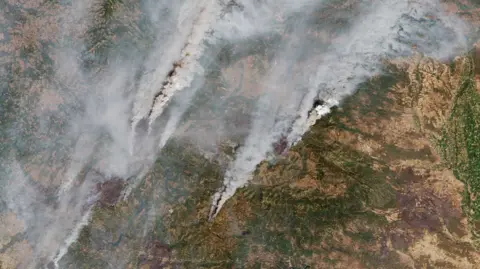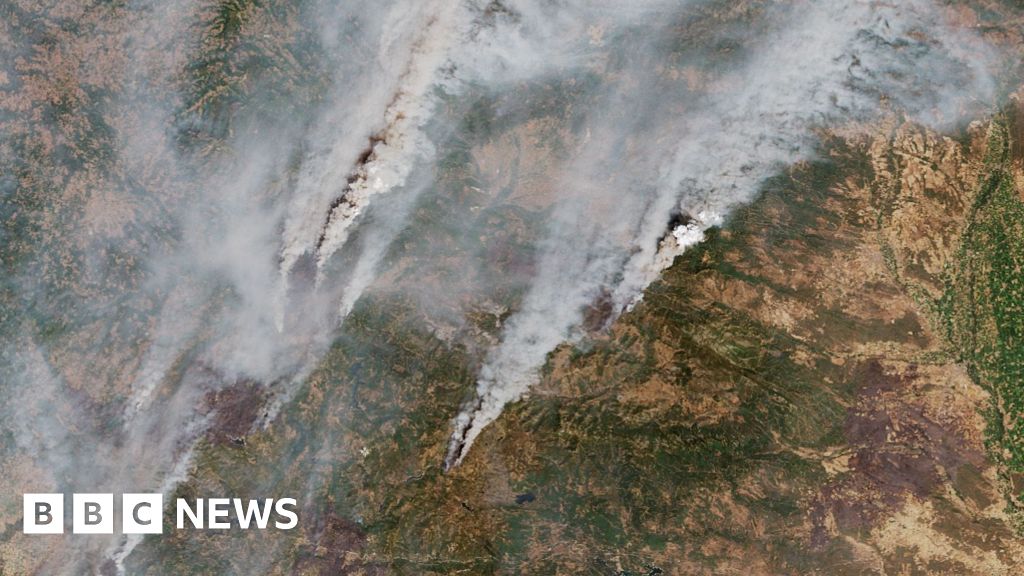The levels of carbon dioxide (CO2), the primary greenhouse gas contributing to climate change, have escalated to their highest point in at least two million years, according to recent data from scientists. The year 2024 witnessed an alarming spike in CO2 concentrations, which rose by approximately 3.6 parts per million (ppm), surpassing 424 ppm. This unprecedented rise starkly contradicts the international commitment made by nearly 200 nations at the UN's Paris meeting in 2015, which aimed to restrict global warming to just 1.5C above pre-industrial temperatures.
Last year marked the hottest on record, with average global temperatures exceeding the critical 1.5C threshold for the first time in a full calendar year. Experts from the UK's Met Office highlight that continued growth in atmospheric CO2 is "incompatible" with efforts to meet climate targets, underscoring the dire consequences of humanity’s reliance on fossil fuels and deforestation.
As CO2 emissions hit new highs, environmental factors such as the El Niño climate phenomenon—highlighting warmer ocean waters—further complicated the natural absorption of CO2. While natural ecosystems like forests and oceans typically absorb about half of human emissions, last year's wildfires and droughts hampered their absorption capacity significantly.
Professor Richard Betts of the Met Office stated that the increasing CO2 levels reveal humanity is veering into uncharted territory regarding climate stabilization, as rapid emissions exceed scenarios predicted by the Intergovernmental Panel on Climate Change (IPCC).
Further compounding worries are indicators that pivotal carbon sinks are losing their ability to absorb emissions. Research indicates that the Arctic tundra may transform into a net CO2 source due to warming and relentless wildfires. Likewise, the Amazon rainforest, a crucial carbon sink, faces threats from deforestation and drought, severely limiting its ability to sequester CO2.
Looking ahead, predictions suggest the rate of increase in CO2 levels may moderate slightly in 2025, but remaining trends indicate persistent divergence from the 1.5C target. With La Niña conditions currently dominating, which may allow for enhanced CO2 absorption temporarily, scientists caution that warming will invariably resume as levels continue to build in the atmosphere.
As global temperatures soar and CO2 levels rise at an alarming pace, the urgency to address the climate crisis intensifies, with the need for immediate action becoming more apparent than ever.


















